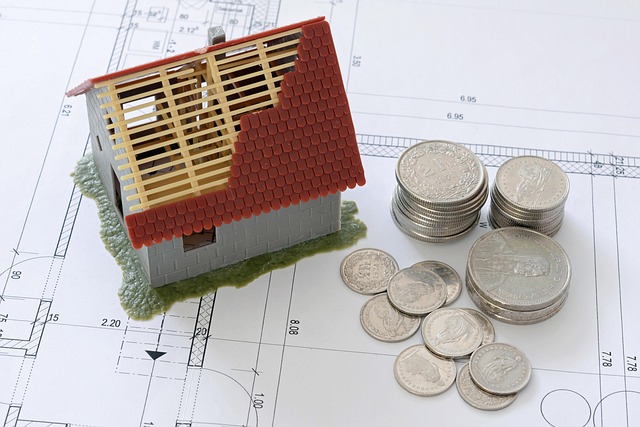Home improvement financing options are crucial for contractors aiming to expand business capabilities and cater to diverse client needs. By understanding various mechanisms like credit lines, loans, and lease agreements, contractors can access necessary funding for larger projects. Staying informed about interest rates, repayment terms, and eligibility criteria ensures wise financial decisions and efficient cash flow management. A strong business history and personal credit score enhance contractor creditworthiness, making it easier to secure favorable financing terms in the competitive home improvement market.
In today’s competitive construction landscape, securing adequate financing is a pivotal step for contractors aiming to thrive. “Home Improvement Financing for Contractors” explores the intricate world of funding options, offering valuable insights for professionals seeking to expand their businesses. From understanding the diverse financing types available to navigating key considerations and enhancing creditworthiness, this article equips contractors with essential knowledge to navigate the financial aspects of home improvement projects successfully.
- Understanding Home Improvement Financing for Contractors
- Types of Financing Options Available
- Key Considerations When Securing Loans
- Strategies to Improve Contractor Creditworthiness
Understanding Home Improvement Financing for Contractors

For contractors, understanding home improvement financing options is crucial for growing their business and serving clients effectively. Home improvement financing for contractors allows them to offer a wider range of services, cater to larger projects, and provide clients with flexible payment plans. This can significantly enhance customer satisfaction and loyalty, as many homeowners appreciate the convenience of spreading out significant expenses over time.
Contractors can explore various financing options tailored to their needs, such as credit lines, loans, and lease agreements. Each comes with its own set of benefits and considerations, including interest rates, repayment terms, and eligibility criteria. Staying informed about these financing mechanisms enables contractors to make sound financial decisions, manage cash flow efficiently, and ultimately deliver high-quality services to their clients in the competitive home improvement market.
Types of Financing Options Available

When it comes to home improvement projects, having access to suitable financing options is crucial for contractors to take on new ventures and offer clients flexible payment plans. There are several types of financing available specifically tailored to meet the needs of contractors in the home improvement sector. These include traditional bank loans, which provide long-term funding with fixed or variable interest rates, ideal for larger projects requiring substantial capital.
Another popular option is line of credit, offering a revolving fund that contractors can tap into as needed, making it suitable for smaller, more manageable projects. Home improvement financing for contractors also encompasses alternative methods like equipment financing, which focuses on leasing or loaning specialized tools and machinery, ensuring contractors have access to the latest technology without the upfront cost burden. Furthermore, peer-to-peer lending platforms have gained popularity, connecting contractors with individual investors seeking to fund specific projects, providing a fast and flexible funding source.
Key Considerations When Securing Loans

When it comes to securing loans for home improvement projects, contractors have unique needs and considerations. One key aspect is understanding the different types of financing available, such as traditional bank loans, government-backed programs, or alternative lenders. Each option has its own set of requirements, interest rates, and repayment terms, so contractors should research and compare to find the best fit for their projects and budget.
Another crucial consideration is preparing a comprehensive business plan and financial projections. Lenders want to see a clear roadmap for the project’s success, including cost estimates, timelines, and expected returns. Well-organized financial documentation demonstrates professionalism and increases the likelihood of securing favorable loan terms. Additionally, maintaining strong credit scores and a solid business reputation can significantly enhance a contractor’s chances of obtaining home improvement financing for their ventures.
Strategies to Improve Contractor Creditworthiness

Improving contractor creditworthiness is essential for accessing favorable home improvement financing for contractors. One effective strategy is to build a strong business history and reputation. This includes maintaining accurate financial records, consistently meeting deadlines, and delivering high-quality work. A solid track record demonstrates reliability to lenders and increases the likelihood of securing better interest rates and loan terms.
Additionally, contractors can enhance their creditworthiness by establishing and maintaining a good personal credit score. This involves paying bills on time, reducing debt, and avoiding excessive hard inquiries on credit reports. Lenders often consider both business and personal credit history when evaluating financing requests, so a robust personal FICO score can significantly benefit contractors seeking home improvement financing for contractors.
For contractors looking to expand their business or take on larger projects, understanding and accessing appropriate home improvement financing is key. By familiarizing themselves with various financing options, such as loans, lines of credit, and leasing, professionals can make informed decisions to boost their project pipeline. Additionally, prioritizing strong contractor creditworthiness through timely payments and responsible financial management will open doors to more favorable loan terms and increased lending capabilities. With the right strategies in place, contractors can navigate the financial landscape with confidence and capitalize on new opportunities in the competitive home improvement market.
